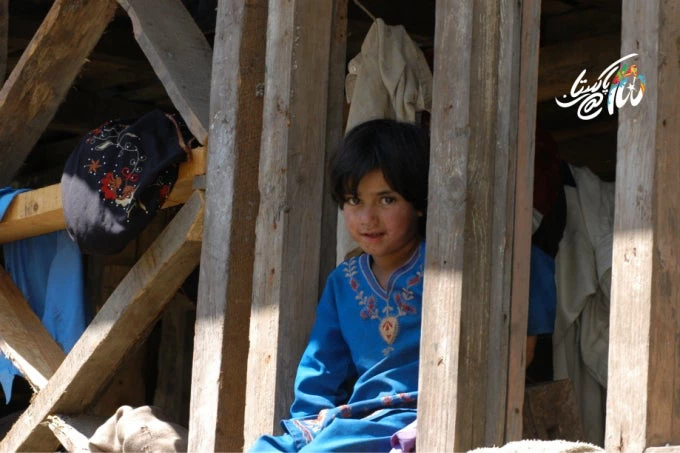
This blog is part of a series that discusses findings from the Pakistan@100: Shaping the Future report, which identifies the changes necessary for Pakistan to become a strong upper middle-income country by the time it turns 100 years old in 2047.
My parents’ gardener has six children – all aged 8 or younger. While his wife is busy taking care of the youngest ones, barely 15 months and 2 months old, he brings the other kids along with him so they don’t wander in the streets.
As I look at the supposedly 8-year-old girl with a dupatta wrapped around her head, looking tiny, probably stunted, suddenly I realize how pervasive all the statistics Yoon and I have been working are – right there, staring at us in our face .
The 38 percent stunting rate for the population, the fertility rate of 3.6 births per woman, the 22.6 million children out of school, the dismal learning outcomes for students, these are all here manifested in this family and its future.
What kind of future is awaiting these children? Will they be able to reach their full productive potential? According to the World Bank’s Human Capital Project, Pakistan’s children born today can achieve only 39 percent of their full potential – productivity they could have achieved if they were able to enjoy complete education and full health.
With over 60 percent of Pakistan’s national wealth (measured as the sum of produced capital such as factories and infrastructure; 19 types of natural capital such as oil, minerals, land, and forests; human capital; and net foreign assets) estimated to be coming from Human Capital Wealth, a failure to nurture and utilize this wealth to its full potential can be fatal.
Nonetheless, successive governments have failed to address the human capital challenge. A careful review of policies in Pakistan on human development reveals a myriad of policies over the 70 years of the country – many strategies appearing sound and well-intentioned, some, of course, appearing to be prompted by geopolitical situations of specific eras of the country.
In this context, we highlight some principles in human capital policies.
The Do’s…
First, strengthen investment in early years. Global research and evidence emphasize the need to invest in the first 1,000 days of one’s life from conception . Invest in households by offering integrated programs that start by ensuring the following:- Family support package – parental support, including planning for family size, maternal education about health, nutrition and sanitation, and child’s early nutrition and stimulation;
- Involving pre- and ante-natal care and information on nutrition;
- Involving the birth package, such as the provision of skilled birth attendants, birth registration, and the encouragement of exclusive breastfeeding;
- Focusing on children’s health and development, with immunizations, information on deworming, identification and treatment of acute malnutrition, and other relevant information;
- Introduction of good-quality pre-school and early childhood development programs.
Data suggests that women aged 35–49, who married after 18 years of age, have on average 4.5 live births . In contrast, women who married before 18 years of age have an average of 6.1 births and a reduction in the incidence of child marriage is likely to lead to 10pc fall in fertility rates.
Targeted and integrated support programs as above should be tailored to address the needs of poor and vulnerable households especially for women in lagging regions.
Complement these targeted efforts with mass media information campaigns on girls’ education, children’s health and nutrition and population planning.
Third, ensure efficient use of resources to get the basic services right. Though merely increasing budget allocation is not the panacea, it does help.
More important, however, is how and where these resources are allocated and the accountability mechanisms to ensure effective and targeted delivery of services.
To address this, establish mechanisms to strengthen the voice of citizens to hold the state, politicians, and policymakers accountable for service delivery such as: strong compacts with clear roles and responsibilities against which service providers are held accountable; effective management of service providers, including standards and monitoring of the quality of services delivered; and client power, or power to choose the best service providers as well as providing a platform for citizens’ feedback on the provision of services, with mechanisms to reflect that feedback.
With the large penetration of mobile phones, such feedback can be provided through easy-to-navigate web-based applications for smart phones and by SMS responses.
Fourth, strengthen programs to address the challenges faced by the existing stock of the labor force . A suite of second-chance interventions that focus on developing the skills of individuals of different needs and abilities should be considered. For the illiterate population, adult literacy and numeracy programs with elements of financial literacy and socioemotional skills, that could help get and retain a job, or start a microenterprise.
For the less educated population, offer packages of accelerated learning with opportunities to complete critical milestones in the education system . For low-skilled workers, options for upgrading skills at a low cost with a strong linkage to labor market opportunities are required.
Incorporate digital and information and communication technology literacy in the second chance programs to capture the global outsourcing markets such as telemarketing or medical transcription .
The Don’ts…
Do not put off. The right time for human capital investment is now. Pakistan does not have the luxury to wait until its macroeconomic conditions get better, foreign investment surges , or Artificial Intelligence revolutionizes the labor market, to invest in human capital.
Do not pursue a short cut. It will take a long time to get the fundamentals right and realize the returns to human capital investment . There is no silver bullet. One simple transfers of Sasha won’t solve all nutrition problems.
Implementation, especially on the scale of Pakistan’s challenges, is an uphill battle. Many initiatives fail not because of bad intentions, but because of the complexity that people face in classrooms, health clinics and in interacting with real people on the ground.
Do not continue business-as-usual. Policies without prioritization, resource allocation without results monitoring, attribution to social and cultural norms for policy failures, and elite capture won’t do .
Do not expect things to change if policy-makers do not monitor what is happening in the service delivery chain, do not measure the outcomes, do not discuss failures publicly, and do not change strategy when things aren’t working.
Do not shy away from engaging and involving the grass root religious leaders in these critical issues. Many other Muslim countries would not have succeeded in improving human capital outcomes if the clergy was not involved.
Pakistan is at a crossroad. What it does today to boost the country’s human capital will determine its path forward . Think and think hard: In 2047, Pakistan’s centennial, what kind of country would we leave for our children?
This article was originally published in Dawn newspaper on March 19, 2019.




Join the Conversation